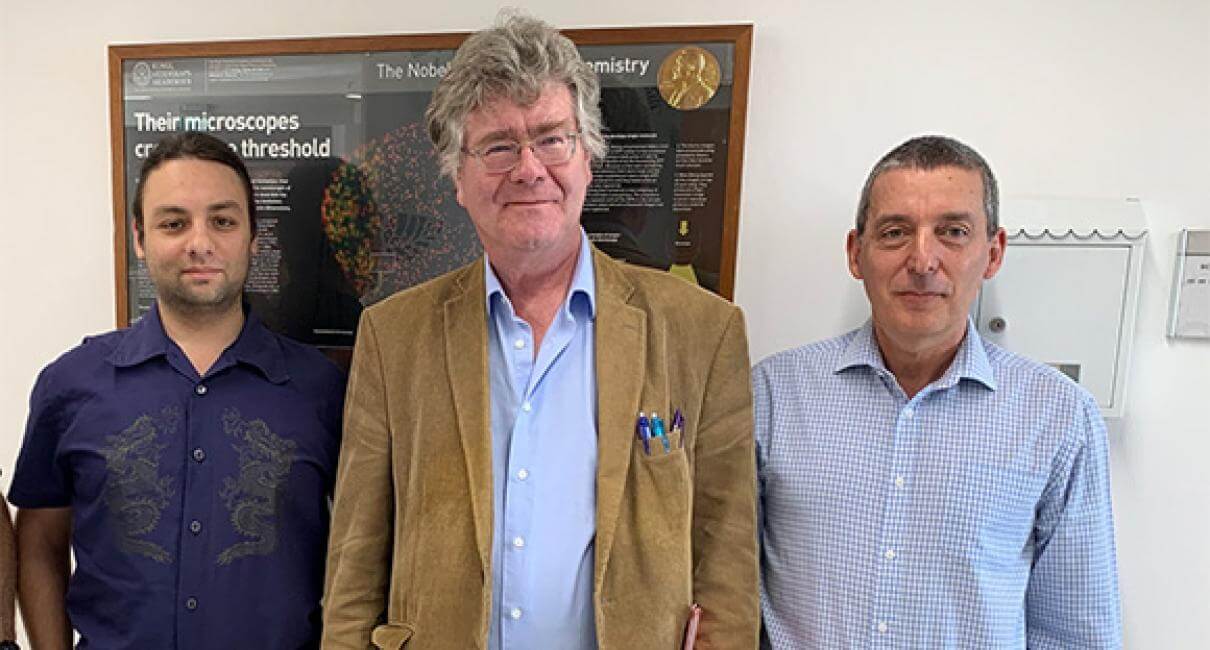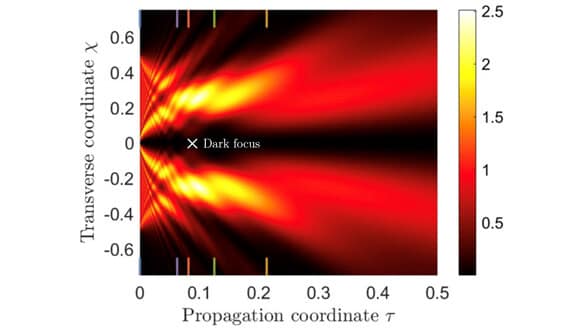Researchers have proven that darkness can be focused just as light can be focused

What happens to us when we enter a very dark place? The feeling is that the darkness surrounds us and we find it harder and harder to focus our gaze on one point. A new study by Tel Aviv University, in collaboration with universities in the United States and Germany as well as the German Space Institute (DLR), shows for the first time that it is possible to "focus darkness", that is, to concentrate waves to one point in space where a minimum light intensity will be obtained. This is analogous to the familiar focusing (for example by lenses or spherical mirrors), which results in a bright point of light.
The darkness at the end of the tunnel
Electromagnetic waves, matter waves and surface gravity waves can be concentrated into a small, focused area in space, a phenomenon known as bright focusing. This is the principle on which a multitude of optical devices operate, including lenses, telescopes, cameras, microscopes, magnifying glasses and also the human eye. Previous work done in the laboratory of Prof. Adi Aryeh, one of the leaders of the new research, along with some of his partners in this research, included the development of a new type of waveguide, which shows that it is possible to focus even without a lens, when light or any other wave passes through a narrow slit and is concentrated to a bright area in space.
The research was conducted by Prof. Adi Aryeh and Prof. Lev Shemer From the Ivy and Alder Fleishman Faculty of Engineering and PhD student Georgie Gerry Rosenman From the Raymond and Burley Sackler Faculty of Exact Sciences. It was also attended by researchers from Ulm University and the German Space Institute - Dr. Manuel Rodriguez Goncalves, Dr. Mathias Zimmerman, Prof. Maxim Ifraimov and Prof. Wolfgang Schleich, and the researcher Prof. William Case from the USA. Prof. Adi Aryeh is in charge of the Marco and Lucy Shaul Nano-Photonics Chair. The study was published in the prestigious journal Applied Physics B.
"Focusing is usually linked to an increase in light intensity in a limited area in space, as can be seen in light passing through a lens. We tried to perform the opposite operation, that is, to reduce the amount of light to almost zero at a certain point in space", explains doctoral student Georgi Geri Rosenman and expands on "the phenomenon that we discovered in the experiment, and which we also studied through an accompanying theory, is called indirect dark focusing. As part of this phenomenon, waves are concentrated to one point in space, but unlike in a bright focus, a minimum of intensity is obtained, while in all the rest of space there are waves of high intensity."
The dark twin of the bright focus
In the article, the researchers detail the theoretical analysis of the problem using tools from wave mechanics and quantum mechanics. The researchers point out that according to the theoretical prediction, this phenomenon can occur even in the absence of a lens that focuses the light, in the presence of a crack only.
"The basis of the new principle of operation that we deciphered is that in half of the crack the wave will be delayed, compared to the other half where the wave will pass without delay. For optical waves, for example, such a delay can be realized by adding a thin plate of glass that will cover half of the crack. The experiment that was carried out used a similar idea, but for water waves," adds Rosenman.
Rosenman elaborates on the second phase of the research, in which the fascinating phenomenon was also observed in surface gravity waves of water: "In Prof. Lev Shemer's laboratory, we created an array of surface gravity waves in a wave pool that is about 5 meters long. On the basis of the theoretical prediction, we engineered the special crack structure in the time space, and observed for the first time the phenomenon of dark indirect focusing experimentally. In fact we realized that dark indirect focus is not only the opposite twin of bright focus, but also has many interesting properties in its own right. For example, we saw that the locations of the dark centers are different from those of the light centers, and that taking the system out of focus may result in the formation of wide dark bands."
The researchers claim that the new phenomenon they discovered has interesting implications for the understanding of wave phenomena, and that it may also have applications in acoustic and electromagnetic waves. "With the help of the conclusions from the experiments we conducted and the theory we built, we estimate that it will be possible to eliminate noises in a targeted manner or capture and move particles more efficiently. Although the phenomenon deals with darkness, it will probably bring a lot of scientific light to our lives, as it is an opening to new physical phenomena," concludes Rosenman.

More of the topic in Hayadan:
- Telescope inside the eye - a contact lens will enlarge the image for macular degeneration patients
- A galaxy cluster that is also a giant gravitational lens
- Visualization inspired by the human eye
- Biomimetic lens
- Infant galaxy in the early universe discovered with the help of a "cosmic telescope"
